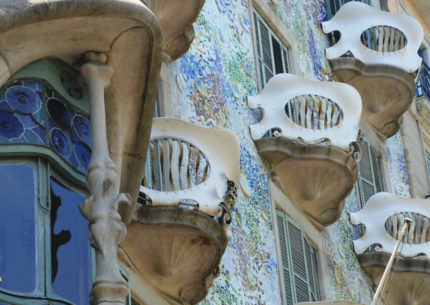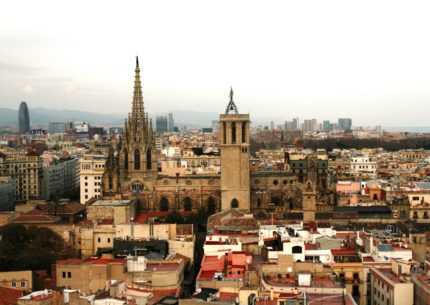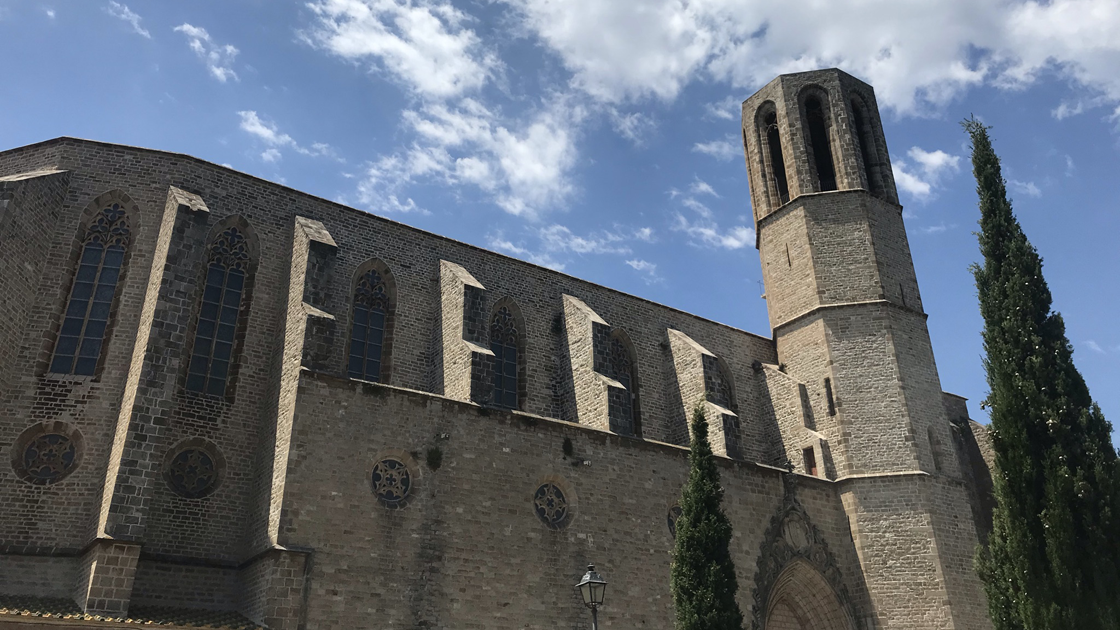
FROM PEDRALBES TO SARRIÀ. PRIVATE TOUR BARCELONA… EXCELLENT!
From pedralbes to sarria. private tour barcelona : Today we want to explore with you a very nice and off-the-beaten-track area of Barcelona. We’ll take you on a private tour of the Pedralbes Royal Monastery and the lovely Sarrià neighborhood.
NOTE: To enhance your experience, scroll to the end and turn on our musical suggestion before reading this blog post.
The Royal Pedralbes Monastery
We’ll start out our visit just outside the Royal Pedralbes Monastery, an ancient monastic complex at the far end of Barcelona.
This truly is one of the hidden treasures of Barcelona. Most travelers on their first visit to Barcelona don’t hear of its existence, and even many Barcelonans have never entered this awesome heritage site.
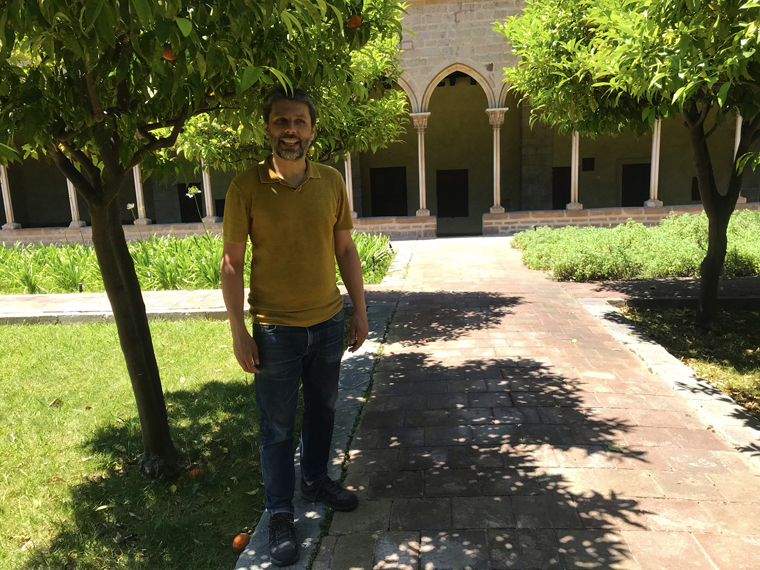
At Unison Routes we pride ourselves in having taken many a local and more than a handful of visitors to this oasis of peace and beauty with a private tour Barcelona.
Private Tour Barcelona: Gothic art heritage in Pedralbes
The monastery was built in the early 1300s, at the height of Catalan Aragonese Crown’s power.
The Gothic architecture and art of this ancient religious complex has been preserved beautifully through the centuries, and today a part of the monastery is accessible to the public as a museum! It’s our pleasure to show you round!
The bell tower
A very elegant yet solid and imposing octagonal bell tower presides over the square outside the inner gate.
The Gothic church
The single-nave Gothic Church can be accessed from outside the monastery, and retains part of its original medieval stained-glass windows.
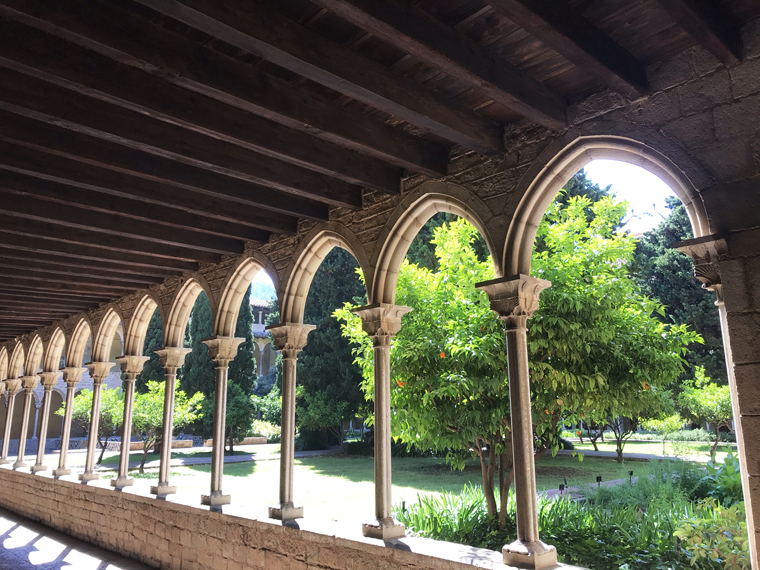
Photo: the Pedralbes Monastery’s Gothic Cloister
The cloister, or the beating heart of the monastery
As we cross the Pedralbes inner gate, we are welcomed by a huge three-storied cloister, the courtyard around which life revolves in all monasteries.
At the center of the cloister one can relax in its blissful orange tree and cypress garden.
It truly is a lovely place to quietly take in as you stroll from the immense refectory over to the former communal dormitory, now a fascinating art museum.
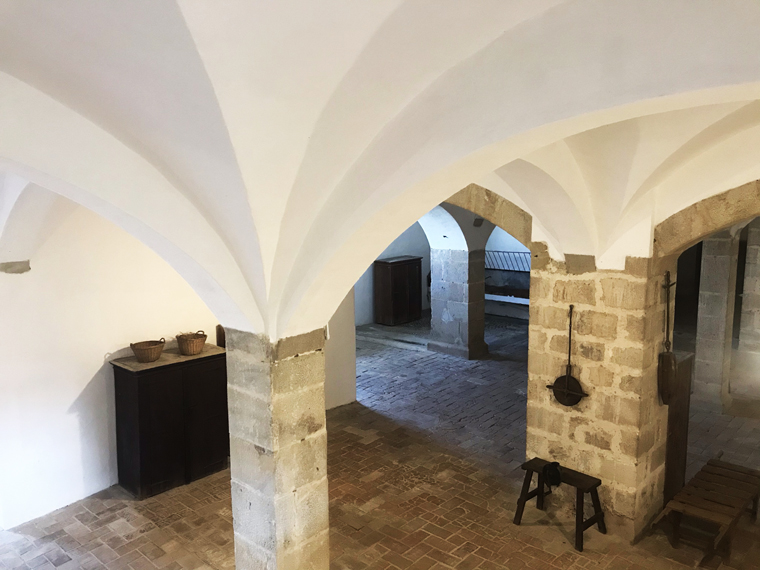
Photo: The Pedralbes Monastery’s vaulted cellar
Other dependencies
It’s fun to explore the parts of the museum which formerly housed the chapterhouse, the hospital wing, and the old kitchens.
We love to go down the stairs that lead to the vaulted cellar and then to sit in quiet contemplation in minor dependencies like the Claustre dels gats.
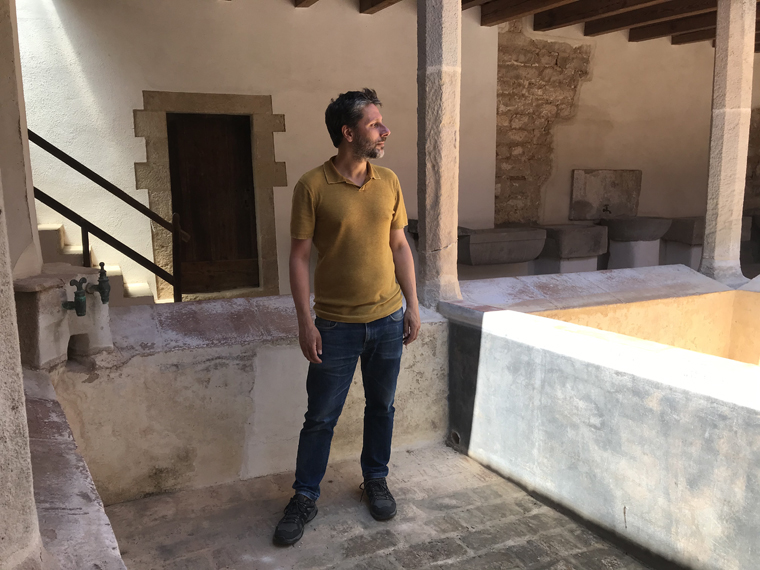
Photo: the Claustre dels Gats
The nuns’ day cells
If there’s one place you should not miss though, it’s the nuns’ day cells, special small places where nuns would spend a few hours of prayer, but also of leisure, every day.
The Saint Michael Chapel
The so called Saint Michael Chapel stands out for the quality of its early 14th-century Italianate Gothic Frescoes.
These were commissioned by the nun Sor Francesca Sa Portella. She used the space as her personal cell and would eventually become the monastery’s second abbess.
As a very well-connected member of the nobility, Sor Francesca could afford to hire the best local artists of the age, the Bassa family painters.
The cell’s walls are entirely frescoed in a style reminiscent of the early 14th-century Italian painters Giotto and Lorenzetti’s work.
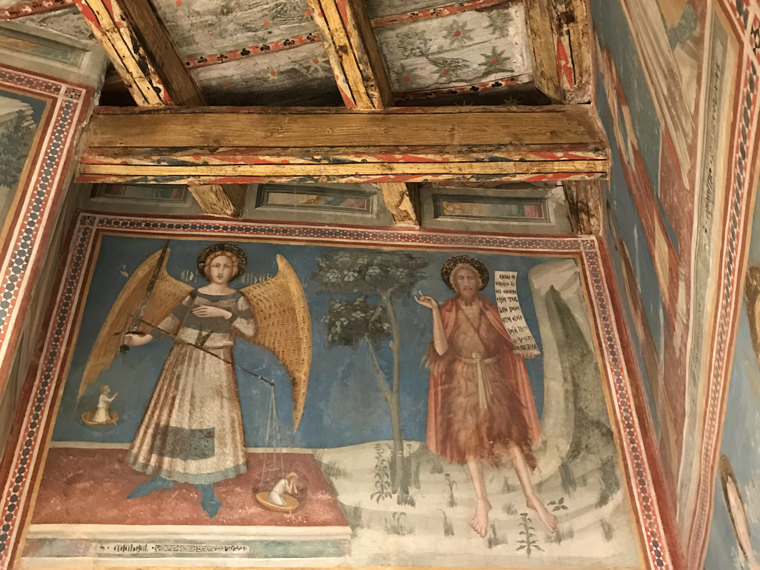
Photo: A 14th-century fresco in Saint Michael Chapel
Queen Elisenda de Montcada and King Jaume II, the founders
The Pedralbes Monastery was founded in 1326 by Elisenda of Montcada (1292 – 1364) and King Jaume II (1267 – 1327).
When the royal couple married in 1322, the ill and ageing King Jaume II already had an adult heir to the crown; it was clear Elisenda would never become Queen Mother. It was clear that, in the near future, she would need a more suitable place to live than at the Royal Court as the widowed consort of a sovereign. The venue chosen for the monastery was the Pedralbes area; it was an ideal location, near the Sarrià village but close enough to Barcelona, and less than 6 km outside the city walls.
Elisenda would live out her days in a palace annexed to the religious complex. From there she would be able to focus on her spiritual life, though she never lost touch with court. The descendants of King James sought her counsel many times throughout the rest of her life.
Queen Elisenda still rests in a monumental alabaster tomb, placed between the cloister and the church.
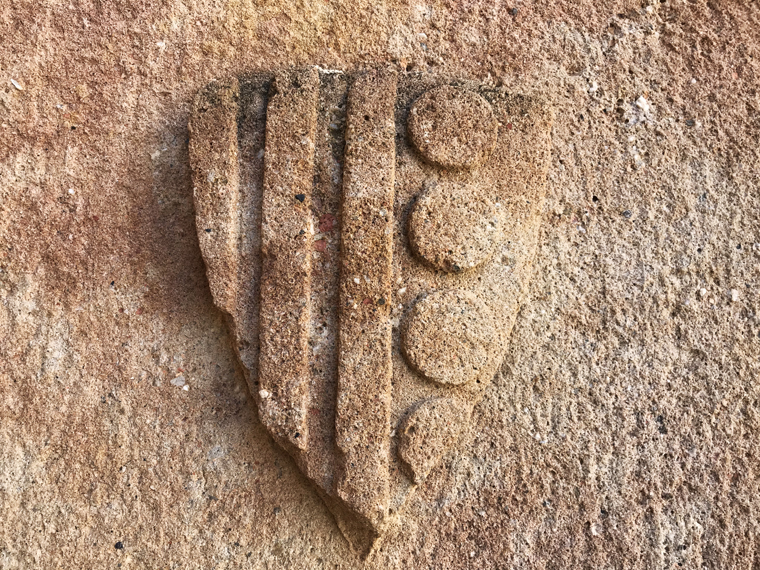
Photo: The coat of arms of the Pedralbes Monastery, combining both the Royal and the Montcada families’ emblems.
The Pedralbes monastic community today
As of now (Summer 2021), the Monastery still has a small monastic community of its own.
The nuns now live in a modern building constructed just behind the core of the religious complex.
They still use part of the medieval cloister and, of course, have their special place to attend mass in the monastery’s church.
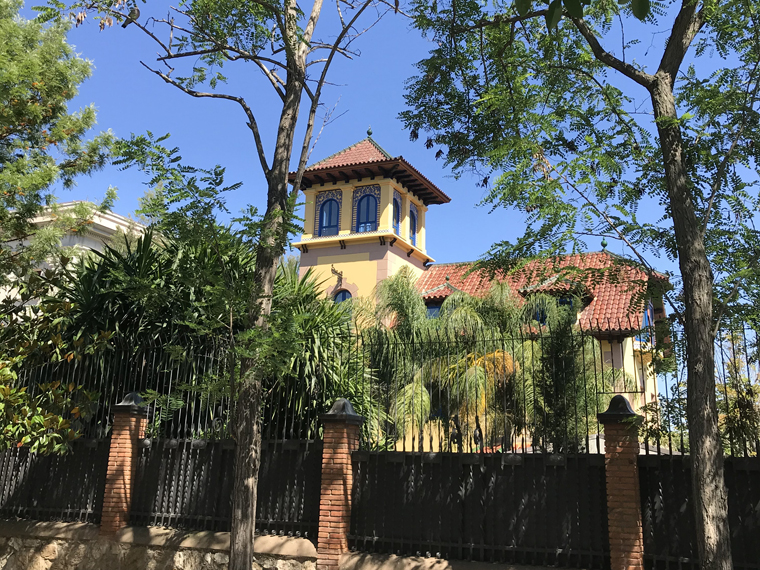
Photo: A villa in Pedralbes
Pedralbes, an elegant neighborhood
The area around above which the Monastery rises is also called Pedralbes and is today a quiet and top-end neighborhood of Barcelona, with beautiful villas and spectacular gardens.
Our next stop lies just a few minutes from the Pedralbes neighborhood.
NOTE: Scroll again to the end and turn on our second musical suggestion before you start reading the following section of this blog post.
The Sarrià neighborhood
Now it’s time to shake off the Stendhal syndrome that commonly afflicts many who visit the Pedralbes Monastery. We need a relaxing stroll in the lively and enjoyable Sarrià neighborhood.
Sarrià’s existence as a village is recorded as far back as the Middle Ages. Located on the plain of Barcelona, it didn’t formally become a city district until the early 20th century.
This happened against the will of the Sarrià people, who preferred not to become part of the big city!
Far and away from old Barcelona?
Somewhat isolated for centuries, it was connected to Barcelona by train in the late 1850s.
That train still takes us to Sarrià in 20 minutes or so from las Ramblas. When you exit the Sarrià train station, the ambience couldn’t be more different!
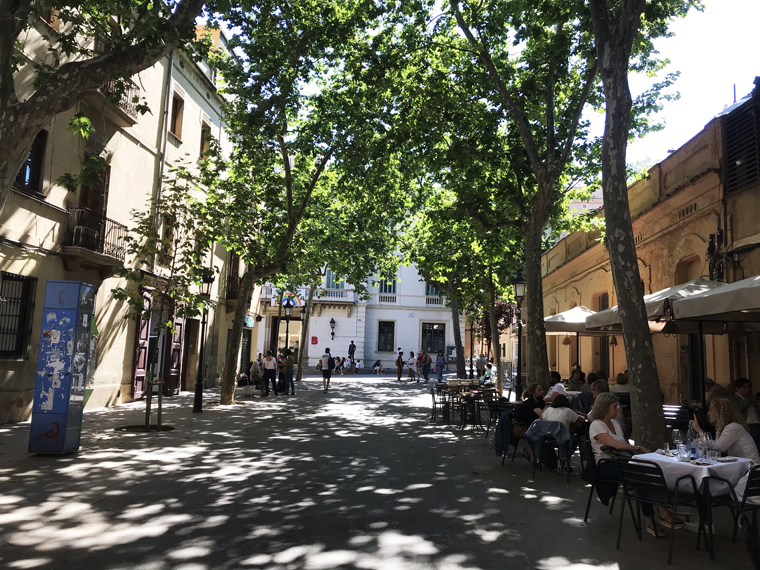
Photo: One of Sarrià’s beautiful corners
Sarrià is endowed with truly charming streets and the quiet local life you see as you stroll around the streets makes you feel instantly at home, no matter where in the world you’re from.
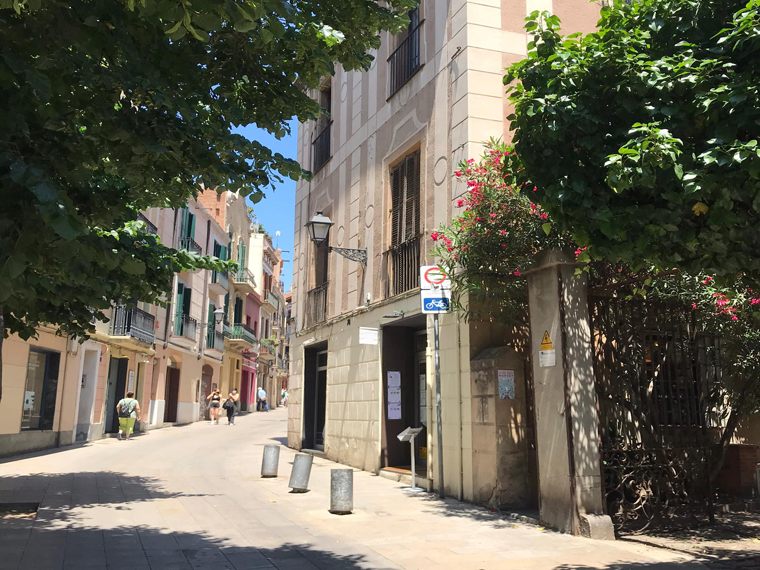
Photo: Major de Sarrià Street
Being a poet and a confectioner in Sarrià
The most famous person to have ever born and lived all his life Sarrià is no doubt, the poet
and writer J.V. Foix.
He was a friend of artists of great fame, such as Salvador Dalí, Joan Miró, and García Lorca, and his work was influential for the young artists of the Catalan Dau al Set group like Antoni Tapies and Joan Brossa.
Though in the late 1930s he chose to focus on managing his family confectionery business, he
never gave up his art, not even during the darkest Spanish post-war years.

Image : Sketch of J.V. Foix by Natalia Esquinas.
Would you like to pay homage to him? Savor with us one of the Foix de Sarrià
Confectioner’s special desserts and, after that, read aloud one of his poems just outside the
poet’s family shop in Gran de Sarrià, where it’s remained since it first opened its doors.
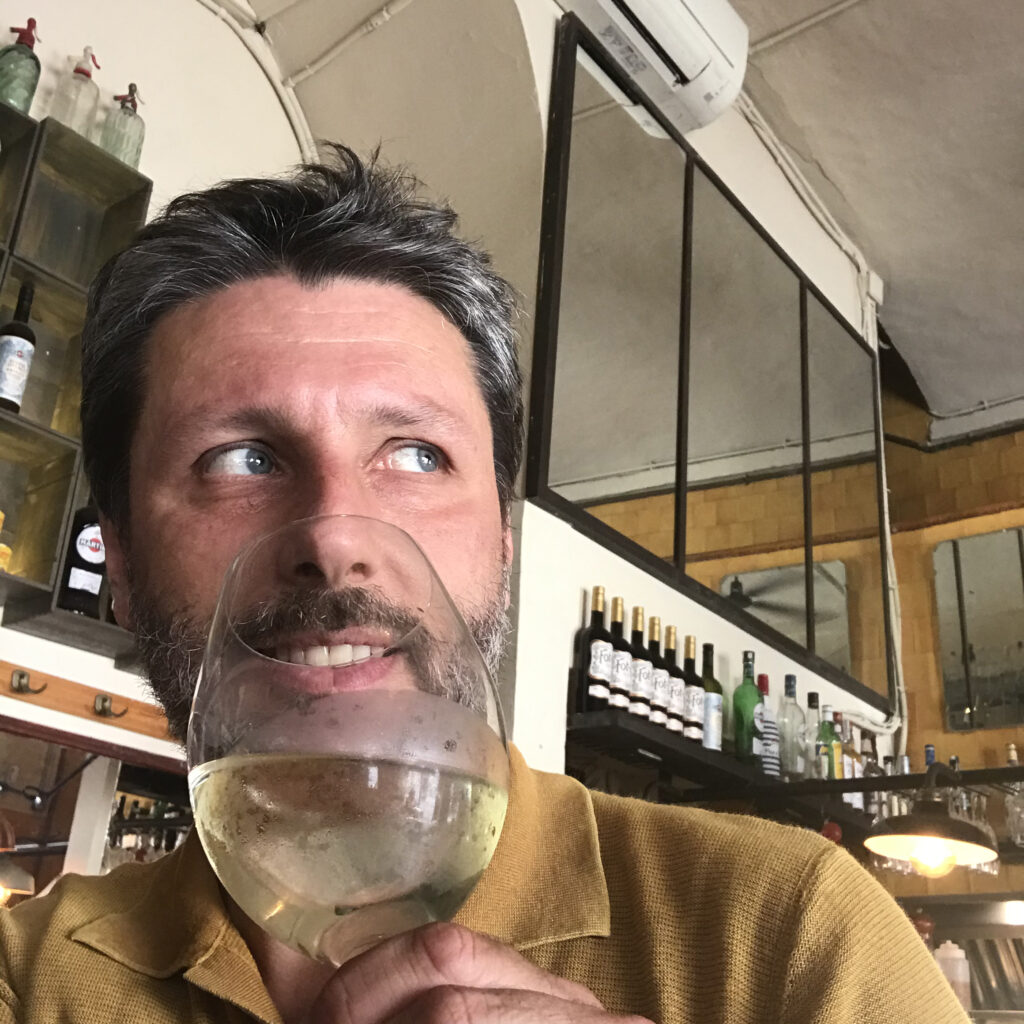
Photo: Enjoying tapas and good company in Sarrià.
Tapas time in Sarrià
After so much exploring in Pedralbes and Sarrià, it’s time we stopped over to relax and enjoy in good company a light lunch with some delicious tapas!
There’s plenty of choices in Sarrià and we know all the good places.
Would you like to know more about this wonderful tour? Don’t be shy, contact Unison Routes!
Musical Suggestions for this Blog Post
Schubert’s Arpeggione Sonata (1st mov.) performed by Božo Paradžik and Mira Wollmann
is our musical suggestion for you to listen to while you read the first part of this blog post concerning the Pedralbes Monastery. Read, listen and enjoy in unison with us!
Toti Soler’s Sardana Flamenca is our musical suggestion for you to listen to while you read the second part of this blog post, concerning the Sarrià neighborhood. Enjoy Toti Soler’s beautiful tune as you keep reading!
Poetic coda
On a poetic note, the ideal ending to this post is J.V. Foix’s poem “És quan dormo que hi veig clar” (When I sleep I see clearly). Hear his verses turned into a song by the famous Catalan musician and songwriter Joan Manuel Serrat.

